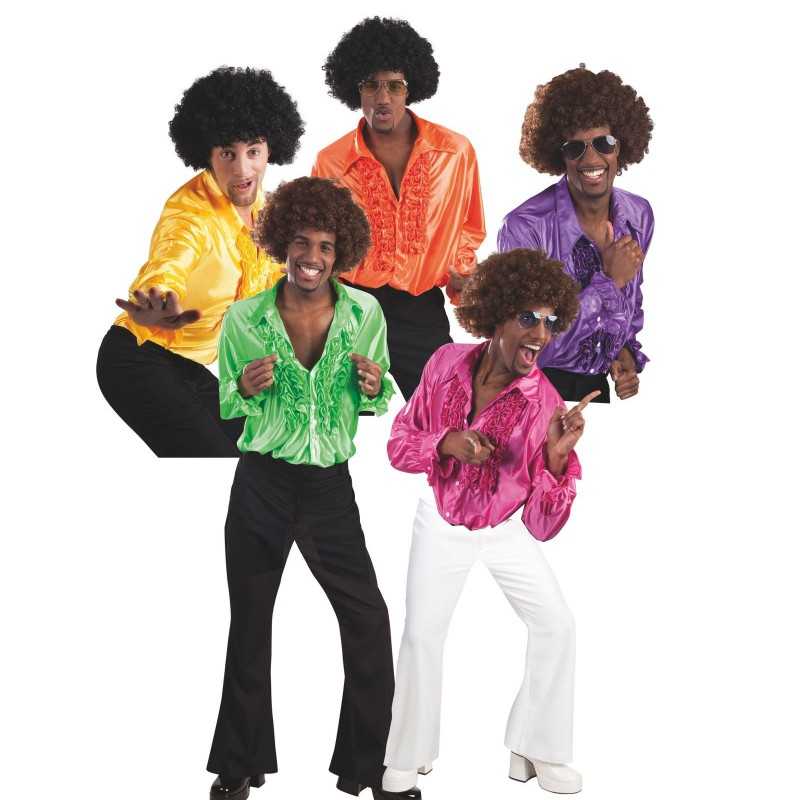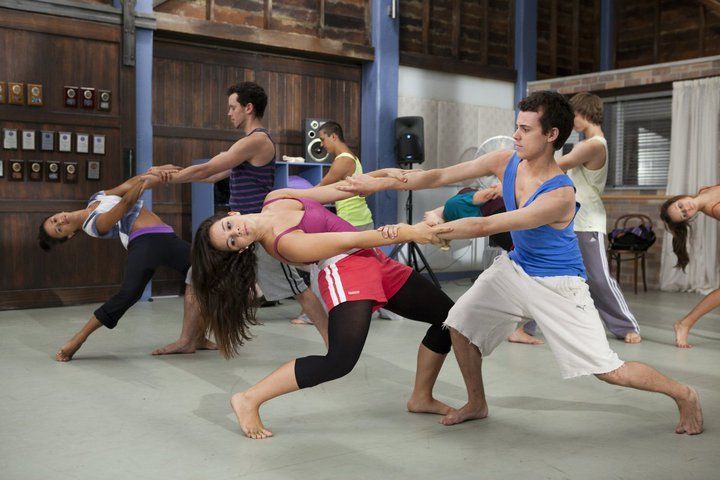How do ballet dancers train
How a Professional Ballerina Trains for Gruelling Performances
Birmingham Royal Ballet
We’ve all seen enough tearjerker dance movies and the inevitable bleeding feet under satin slippers to know – ballet is no walk in the park.
Especially when, like Birmingham Royal principal ballerina Céline Gittens, you’re getting ready for what’s arguably the biggest show of the year: the Nutcracker at the Royal Albert Hall in London.
‘Training for a show isn’t just done on stage or in a studio,’ says Céline, 31, who is set to dance as the Sugar Plum Fairy in the classic, which takes to the London stage from 28 to 31 December.
Along with the hours she spends at the bar, she also spends time in the gym building muscular strength to manage those powerful jumps, and endurance to keep going through hours-long productions.
Céline’s days start with an hour and 15 minutes of ballet class every day, in which the dancers warm up at the bar, then gradually progress to doing turns and big jumps. After a 15-minute break, they’re straight into an hour and a half rehearsal for whatever show they’re performing at the time.
Birmingham Royal Ballet
They have an hour for lunch, then back to work rehearsing for upcoming shows from 2.30 pm until 6.30, with 15-minute breaks every so often.
‘It’s quite intense, but the good thing is that every day is always different routines, different dances,’ the Trinidad-born dancer says.
Three days a week, Céline has to squeeze in another hour and 15 minutes of strength and conditioning work.
Her sessions start on the cross trainer, with half an hour of interval work. ‘I do three minutes of really pushing high really high intensity, then one minute slow on low resistance for recovery. Then back up to three minutes of going, going, going,’
This kind of training helps build stamina for her solos, she explains. ‘Usually ballet solos are about 2 and a half minutes long, so if we can sustain intensity [on the cross-trainer] for three minutes, that’s perfect. ’
’
After that, Céline’s on to strength and conditioning. Her strength MO? Reformer Pilates.
It helps the dancers build long, strong muscles, Céline says, which are physically and aesthetically important for them.
Jenny Mills, Céline’s trainer, designed the programme to help Céline focus on her foot, knee, and hip alignment, and help her to activate her VMO (short for vastus medialis oblique – the muscle above the knee), her adductors (inside thighs), lower glutes and hamstrings.
‘This series of exercises is done lying on a trolley on a reformer track, which is attached to the frame by springs,’ Jenny explains. ‘The feet are then placed on a bar of the frame, and you bend and straighten your knees against the springs’ resistance.’
The lighter the resistance the more the focus is on the core, and the stronger the springs settings, the more emphasis on the leg muscles, Jenny says.
Céline starts with some static holds in a knee bend – usually for about 4 sets of 30 seconds.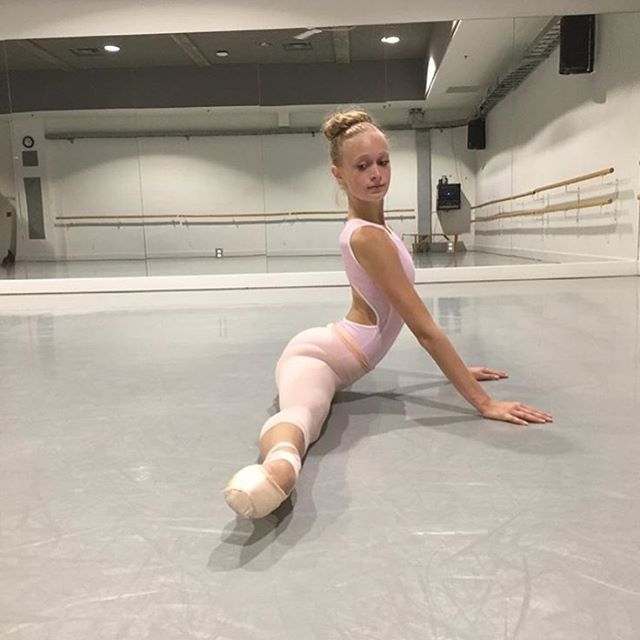
‘Then she progresses onto a series of knee bends changing the positions of the feet and legs from parallel to turn out, from two legs to single leg, ending with calf raises.’ She usually about 10 – 12 reps in each position.
After that, it’s off the reformer and onto more conventional training to target Céline’s core, posterior chain, balance and endurance.
She’ll do front and side planks, weighted step-ups and single-leg Romanian deadlifts – 3 sets of 8 reps in each exercise.
You get all that? Here’s a breakdown of Celine’s strength workout:
Ballerina Strength Session
- 30 minutes interval training on cross-trainer (3 minutes work, 1 minute recovery)
- Reformer static holds (4 sets of 30 seconds)
- Reformer knee bends (legs parallel, toes turned out, single leg, calf raises – 10-12 reps in each position)
- Front plank (3 sets of 1 minute hold)
- Side plank (1 minute hold on each side)
- Weighted step-ups (3 sets of 8)
- Single-leg RDL (3 sets of 8 on each side)
‘Additional strength training is crucial for the dancers,’ says Jenny.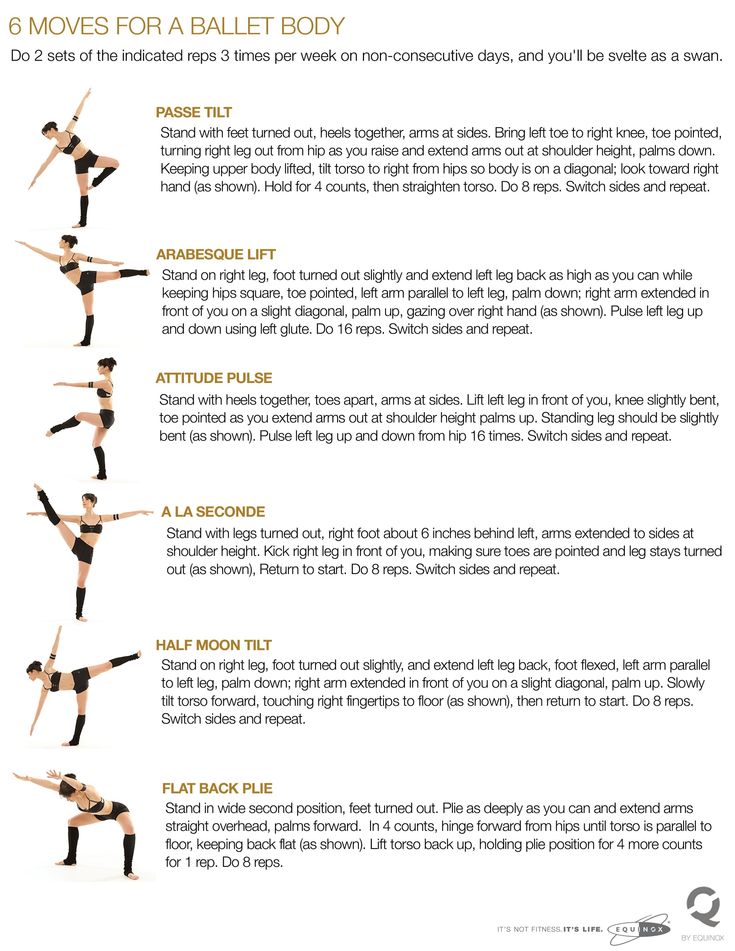 ‘We want to keep them healthy, strong, fit and injury free and to meet today’s choreographic demands and the rigours of a touring life.’
‘We want to keep them healthy, strong, fit and injury free and to meet today’s choreographic demands and the rigours of a touring life.’
Watch Céline live on stage in The Nutcracker at Royal Albert Hall in December 2019.
Cross Training for Ballet Dancers
Just because you dance, doesn’t mean that needs to be your only form of exercise. In fact, trying different forms of cross-training can actually help you become a better dancer, and improve specific weaknesses.
How do you decide which form of training is best for you and will compliment your regime? Well, that’s up to you.
Here, we’ll break down the various forms of cross-training that you may want to consider, as well as their pro’s and con’s.
Cross Training for Ballet Dancers
Pilates
Without getting into the history of pilates, it has proven highly beneficial for us dancers. The reason why? It focuses on core strength and overall flexibility. 99% of our movements require a strong foundational core, and pilates helps you build those ab and back muscles. This additional strength can help you improve your ability to perform various ballet exercises correctly.
99% of our movements require a strong foundational core, and pilates helps you build those ab and back muscles. This additional strength can help you improve your ability to perform various ballet exercises correctly.
With an emphasis on balance, pilates help you correct muscle imbalances and misalignments. After all, most of us have leg that is longer/stronger than the other, and Pilates ensure we work both sides equally.
Here are some videos of some pilates workouts that are great for cross training for ballet.
Yoga
Most of you probably already know about yoga, but it can also be a great form of cross-training for us. It helps us to development even stronger focus, ease the tension in our muscles, increase our flexibility, and really hone in our breathing technique.
I love the focus on breathing and think it helps us tremendously in ballet. It forces our lungs to expand, helping to increase our endurance and overall body control. The slower pace of yoga will also help you ensure you fine-tune every little detail in your body.
The different asanas will teach different forms of control/awareness and flexibility further strengthening our limbs. And the different movements in yoga will help your body detox and improve blood circulation.
Below are some good videos of yoga workouts that are effective for ballet training.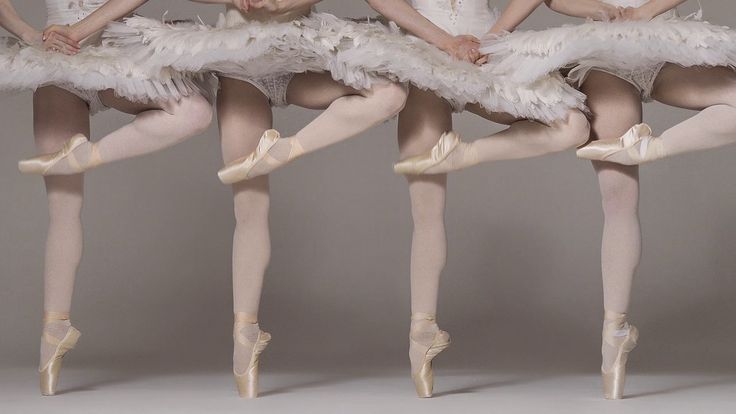
Weight Training
Ah yes, the infamous myth of resistance training is only for bodybuilders. Well, that’s completely false. Weight training and resistance training have many benefits for dancers.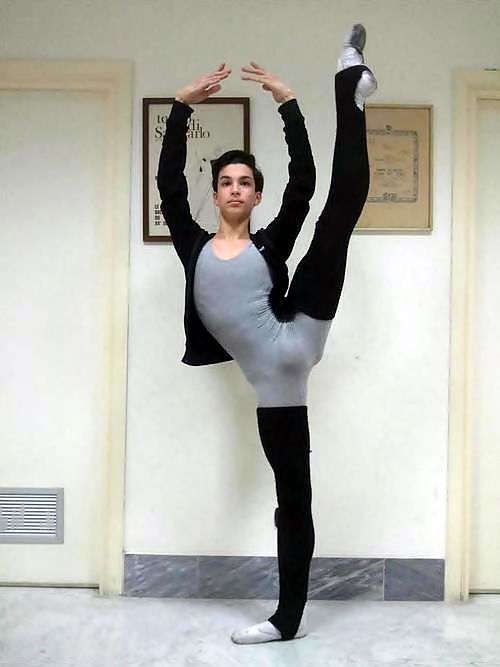
The most obvious is power and stamina. There are several movements that are more explosive and will require us to move quicker, but our normal routines just won’t cut it. I’ve known several dancers who have looked down on weight training because they believed the myths of becoming bulky or stiff.
There is no research or evidence that supports that. In fact, it’s quite the opposite. Weight training for ballet will have incredible benefits, but you must make sure to always use proper technique and build programs based around your needs.
I highly recommend using plyometrics and compound movements to build your ballet strength. Compound movements are those that will force you to activate several large muscle groups. Plyometrics are dynamic movements that activate your entire body. Remember, dancers are athletes, and many of the same exercises that you’ll see professional football players doing will be similar to the ones that will benefit us the most.
You’ll also find that full body workouts like the one below are a great way to cross train for ballet.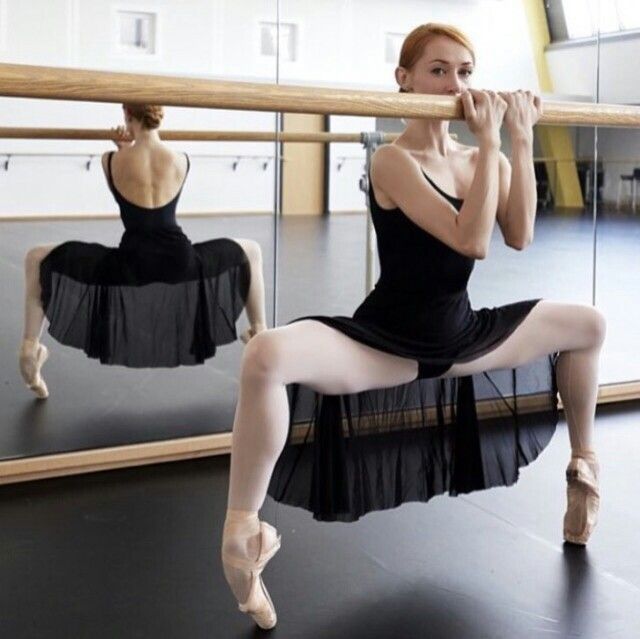
Swimming
Endurance is key to dance. Swimming is a slightly different alternative to other forms of cardio exercise, and the minimal impact will save our joints any possible issues that can arise from jogging/running.
Swimming is proven to help build lung capacity faster than other forms of cardio, and even improve our flexibility and lean muscle.
Soul Cycle
I love Soul Cycle. I think of Soul Cycle as more of an existential experience than a workout. But that shouldn’t take away from the fact that spin classes like Soul Cycle are incredible workouts. Soul Cycle classes are full body workouts and a great way to mix things up. And believe it or not, once you’re done you’ll feel empowered.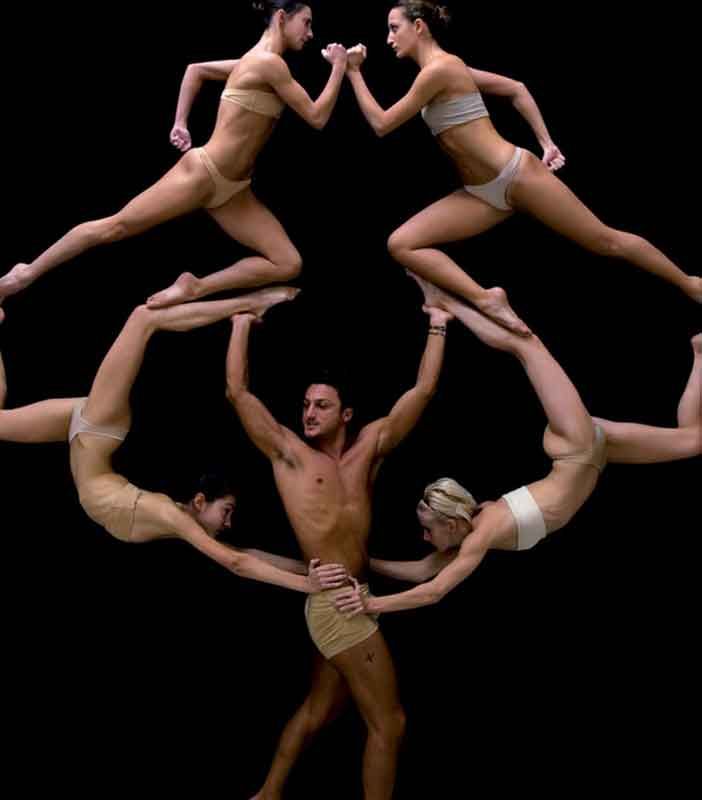
And just for kicks, here’s a video of a SoulCycle workout.
Final thoughts: Cross training for ballet dancers
Looking for ways to get some extra physical activity in that will benefit you in ballet? The above are just a handful of ideas of different cross training workouts you can try.
If you have other suggestions, then let us know in the comments below!
Why ballet can be equated with sport
Sport and ballet as twin brothers
Ballet is a high art. This has always been considered, and until now, most people treat ballet as an art, not understanding what it can have in common with sports. We see only beautiful action on the stage, not even suspecting how hard it gets.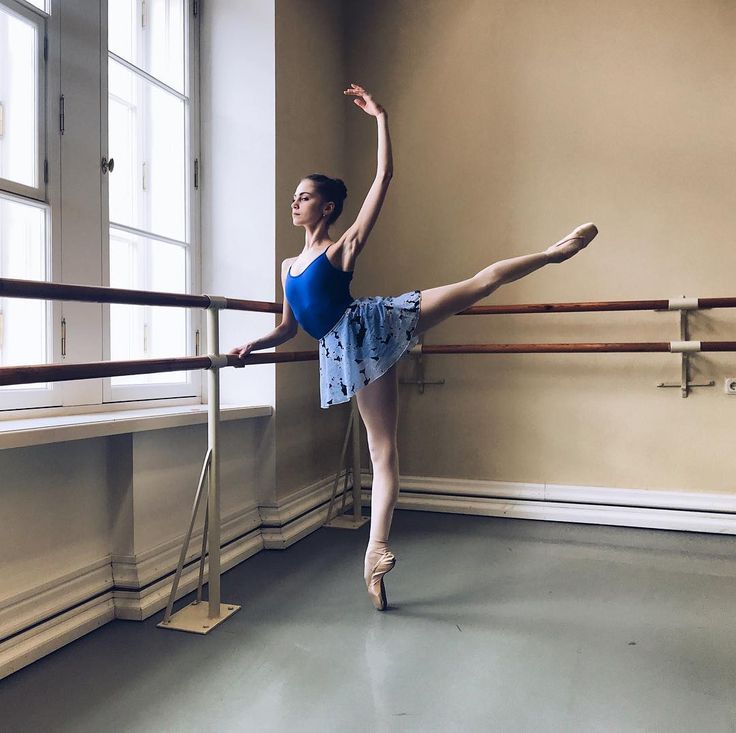 And only a few who are closely familiar with the profession of a ballet dancer know what loads the masters of the stage endure so that we can enjoy great works.
And only a few who are closely familiar with the profession of a ballet dancer know what loads the masters of the stage endure so that we can enjoy great works.
And in sports, for the most part, we see only a spectacular result in competitions and also do not suspect what figure skating training looks like or what gymnasts' performances are worth. Sitting in a comfortable chair with a remote control in your hand, it’s easy to shout at the TV “Where are you hitting, muff!” or advise how best to jump, to whom to pass the ball, how much more actively to move your arms and legs. And all the difficulties can be understood only when you yourself want to do it.
Why strong muscles are needed in ballet
The same can be said about ballet. They flutter and jump, well, what kind of sport can there be? And you can understand “what kind of sport is there” by imagining yourself in the place of a dancer on stage. For example, try to make a jump "cabriole" or at least "entrecha". But for this you have to understand the movement algorithm.
But for this you have to understand the movement algorithm.
Let's take the cabriole. The dancer needs to push off the floor, literally taking off to a great height, hovering in the air for a moment and, before landing beautifully (and not plopping down), have time to make several movements with his legs. For an unprepared person, this algorithm is difficult to even mentally imagine, but in fact it is simply impossible to perform. Neither the brain nor the muscles just understand how to do it. Just imagine how strong the push from the ground must be in order to reproduce all this!
And now let's imagine ourselves as an airy ballerina, who "know to yourself, spins like a top" and beautifully swings her arms. “Now, if I had pointe shoes, I would wind them up even more,” many people think over a bun and a cup of tea. And only by standing on pointe shoes and making a few “pas”, you can understand something about the work of a ballerina. It is about labor associated not only with beauty, but also with grueling workouts.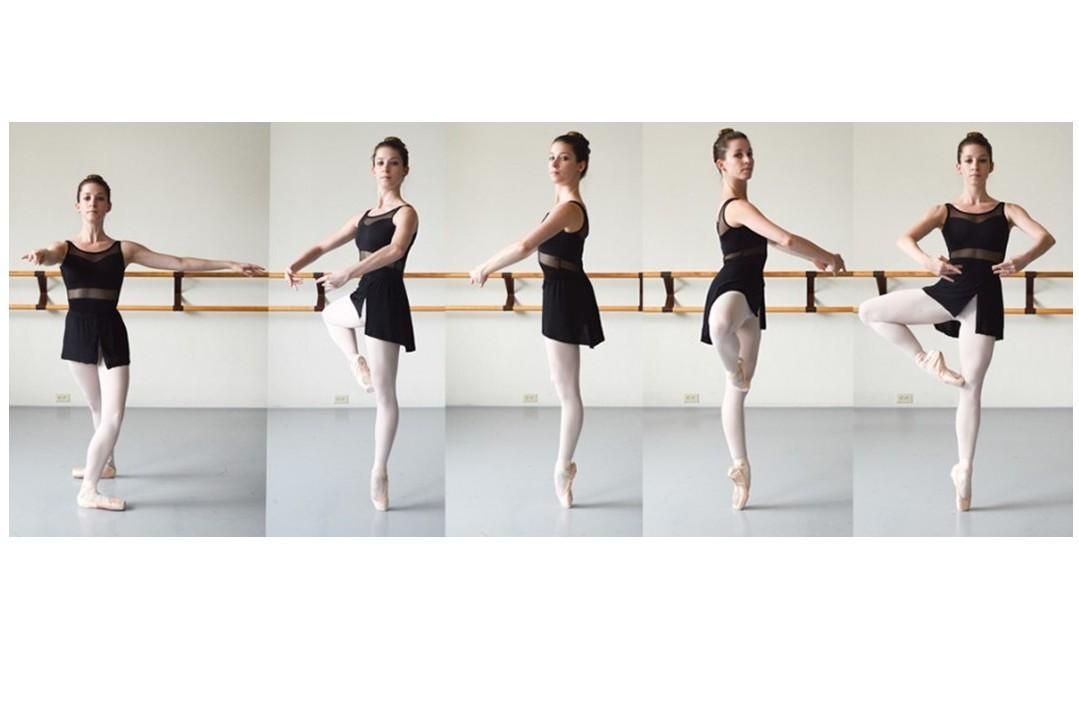 Exhausting sports training.
Exhausting sports training.
Why ballet is more difficult than sport
Accepting ballet as a sport is not easy for many, and the profession of a ballet dancer is often not even perceived as physical labor. Therefore, no one classifies ballet dancers as athletes. Meanwhile, this is also a serious mental work, when the brain must sort through and work out each movement, each batch, and the body must remember which muscles perform this or that movement.
Ballet dancers experience stress and injury often more and more severely than members of some sports. This creates an interesting situation. The weightlifter, who has taken the weight, shows with his whole appearance how hard it is for him and how much he puts effort. The jumper, who performed the jump cleanly, causes delight and admiration for the strength of her legs. But a ballet dancer who spends an hour and a half or two hours on stage in make-up, jumps (beautifully!), raises ballerinas (beautifully!) and performs some incredible elements (again, beautifully and with a smile on his face) - here he is has no right to show the viewer how much effort it costs him.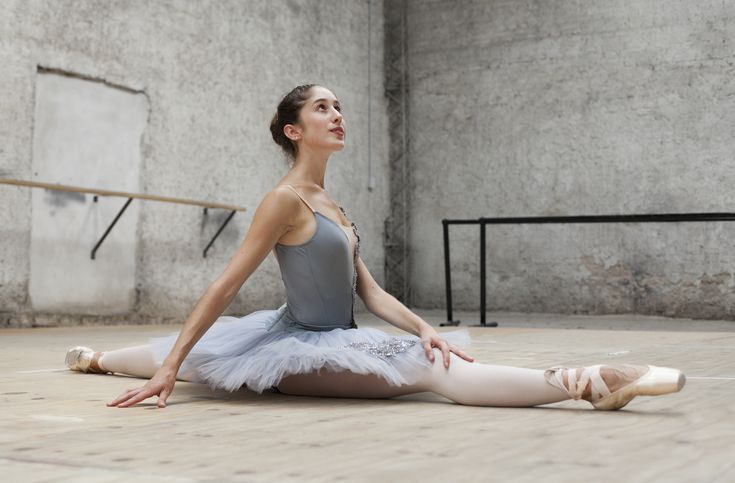 Because this is high art, and not just sports, and the viewer should see the holiday, not the kitchen.
Because this is high art, and not just sports, and the viewer should see the holiday, not the kitchen.
When listening to sports reports, we often hear what injuries an athlete is currently competing with. At the performance, no one will ever tell you what injury the artist is dancing and jumping with now, which leg is bandaged, and which muscles are covered with teips. Because in this profession it is not customary to advertise problems. Art must be beautiful.
Why ballet is for the strong and enduring
And if you think about it, everything is much more complicated than just a beautiful performance. Daily ballet training is training, not rehearsals. Ballet dancers must knead and stretch their muscles every day so as not to get sprained or torn during training. Men train both biceps and triceps in order to easily and naturally, with a smile on their face, lift and carry ballerinas in their arms. For example, how many types of push-ups do you know? From the wall, from the floor, with straight legs, with bent knees? And try to push yourself off the floor by turning your hands inward. Or even putting them next to each other. As a result of these strength exercises, we see such muscles in the arms and legs that many athletes can only dream of, and ballerinas can always be sure of the reliable strong hands of their stage partner.
Or even putting them next to each other. As a result of these strength exercises, we see such muscles in the arms and legs that many athletes can only dream of, and ballerinas can always be sure of the reliable strong hands of their stage partner.
Just like athletes, ballet dancers experience colossal cardio loads. In an hour of training, they spend more energy than in an intense fitness workout. At the same time, all types of exercises are designed to develop only those muscles that are needed for ballet, and they cannot be pumped over.
Stretching muscles and joints to achieve the necessary flexibility, training the foot through pain and "I can't", the power of the push and the height of the jump, an incredible flight with hovering in the air, training the respiratory system, the vestibular apparatus, coordination - how many sports nuances merge daily into one ballet training in order for the viewer to have the opportunity to see beauty and grace on the stage as a result? We admire Spartacus, his strength and masculinity.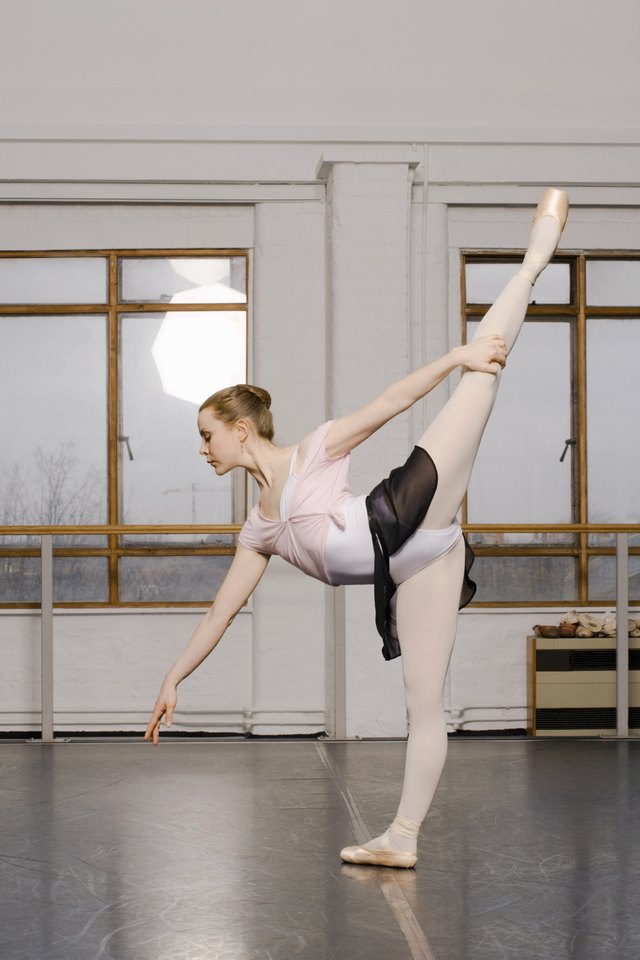 And we forget that this image, this beauty and strength is given to us by the ballet dancer. Who is not even an athlete. It would seem that it should be much easier for an athlete to embody the image of Spartak. But he will not be able to do this, because in addition to strength, artistic abilities are also needed.
And we forget that this image, this beauty and strength is given to us by the ballet dancer. Who is not even an athlete. It would seem that it should be much easier for an athlete to embody the image of Spartak. But he will not be able to do this, because in addition to strength, artistic abilities are also needed.
It takes 8 years to become a professional dancer. Eight years of daily training almost since childhood. Ballet is not for the weak. Only people with a strong will and aspiration can, through the inevitable injuries, the development of endurance, the development of artistic abilities, perform with pain and fractures - and at the same time always smile. An athlete can knock down the bar, drop the barbell, not score a ball, concede a puck, not catch up with an opponent - he always has the opportunity to train further for the result. In ballet, physical indicators alone are not enough. You need to think about your part, not to confuse movements from several performances, remember combinations and connections correctly - and sometimes a couple of incorrectly performed movements can threaten the collapse of your entire career, since the artist may no longer be trusted with a complex part in a performance.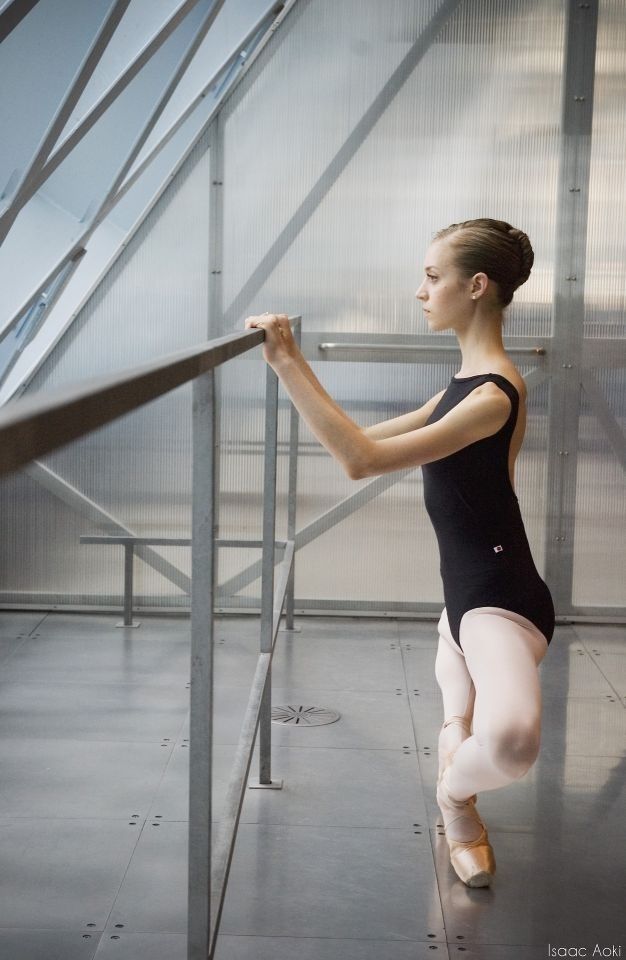
Sport is a battle for results, where achievements in competitions can be covered by new records. Ballet is a combination of sport and art, and there are no records in it. There is a result: staging a performance that will be enjoyed for many years.
How ballet dancers train at home: ballerina Elizaveta Taranda talks
Recently, the Vremya program aired a story about how Bolshoi Theater artists perform their morning class during quarantine. Many people ask me how I am doing now. I answer.
I consider discipline and daily routine to be the most important rule during self-isolation. You need at least a rough plan with mandatory items that are important for you. In my case, this is a lesson, gymnastics on the floor and exercises on pointe shoes.
A lyrical digression: it so happened that my apartment is a creative workshop, and the tasks of putting things in order and systematizing things, books, photographs there will be enough for three quarantines.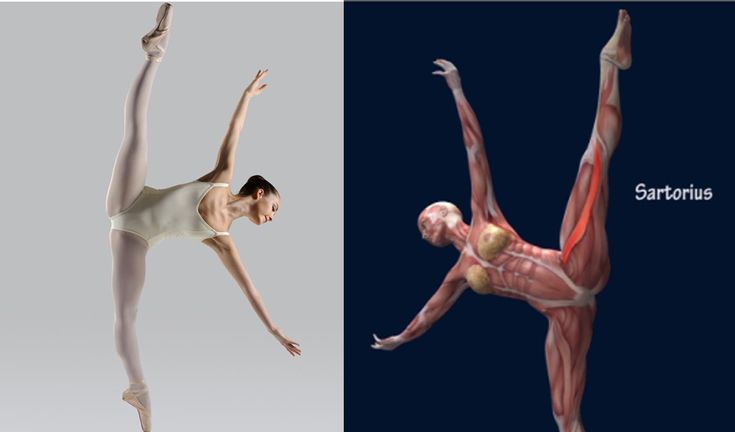 But back to training and living in prison for the sake of the health and safety of loved ones.
But back to training and living in prison for the sake of the health and safety of loved ones.
The goal is clear
The goal of homework should be at least strengthening the muscles of the abs, back, ankle, stretching the popliteal and inner thighs.
The dimensions of my apartment, as well as the furniture and the piano, do not allow me, like many artists, to arrange dances “with tambourines”.
Trying to complete a lesson in an apartment designed for a hall with a floor and a different footage is also quite difficult, so you can focus on all the weak points and exercises that you are too lazy to do in the hall.
For example, the small muscles of the feet are well strengthened on the bare balance, and the Achilles are pumped up with thousands of lifts on the toes, often with weights put on the legs.
Bodysuit and skirt, all Fendi. Hairstyle: Evgeny Trefilov for Redken. Makeup: Kirill Shabalin for YSL BeautyTime and action
I think the best time to practice is in the morning: when you are at arm's length from the barre, it's a sin not to start early.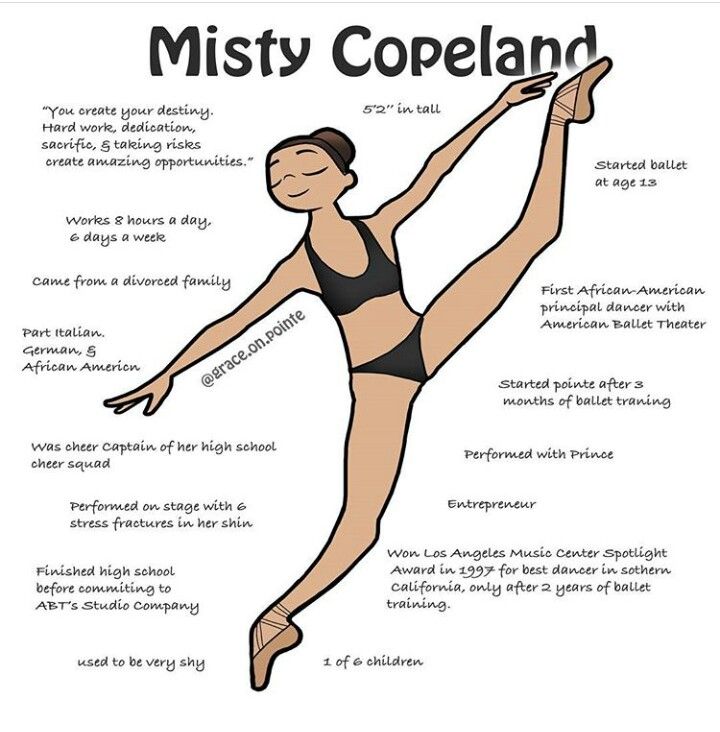
I watch on the Internet videos of Asaf Messerer (Bolshoi Theatre), Olga Evreinova from Covent Garden, Andrey Klemm's lesson for Isabelle Sjarvolla from the Paris Opera on pointe. I train balance, try to turn my legs as much as possible, work on my mistakes.
After warming up well, I try to devote another 40 minutes to stretching and simple exercises for the press and back: feet under the sofa, legs bent at the knees, slowly raise the body to the knees with a straight back and slowly lower to the floor, so 15 times at a slow opposite pace to calm music. Respite and a few more approaches.
Then I roll over onto my stomach and also slowly shake my back. The friend-sofa serves as a soft support for twine. At this point, to take my mind off my aching muscles, I turn on the TV. I try to do a lot of ascents and descents on half-toes and in pointe shoes I do simple combinations and train balance.
Those who are familiar with Boris Knyazev's gymnastics on the floor do not lose heart at all: it completely repeats exercises at the barre.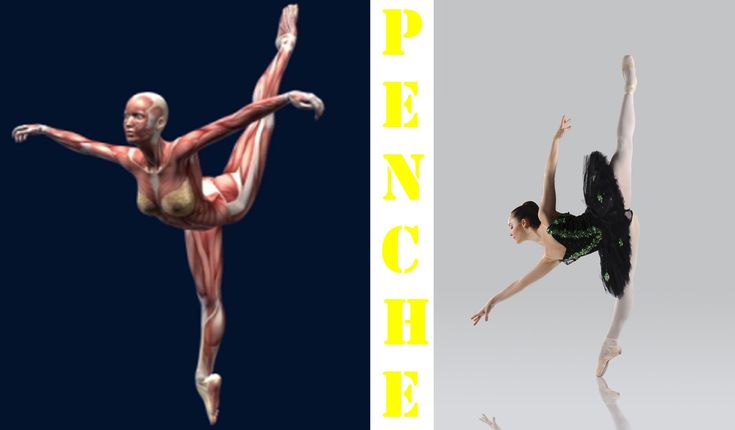 All movements are performed lying on your back or stomach and, by reducing the load on the joints, make it possible to better master your muscles.
All movements are performed lying on your back or stomach and, by reducing the load on the joints, make it possible to better master your muscles.
The movements require great effort, and the unusual position of the body adds to the complexity: you can sweat just as much as standing in a ballet hall.
For many years I have been training non-professional amateurs, helping them develop stretching and sitting on the splits. During the quarantine period, they began to contact me with a request to conduct an online lesson.
What are its advantages? You can practice tête-à-tête on your own territory without renting a gym, not being bound by anything other than an agreement with a coach, without fear that someone will see how you are doing.
This option also exists in group training as it is run through a program where the trainer sees everyone and the participants only see the trainer. I suggest exercises that are as safe as possible to perform on your own.
The right to personal
But I decided not to post my own classes on the Internet.

